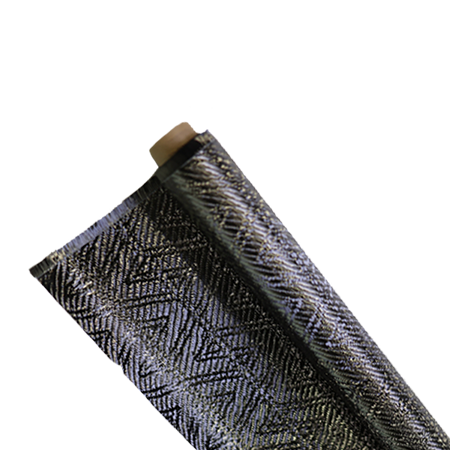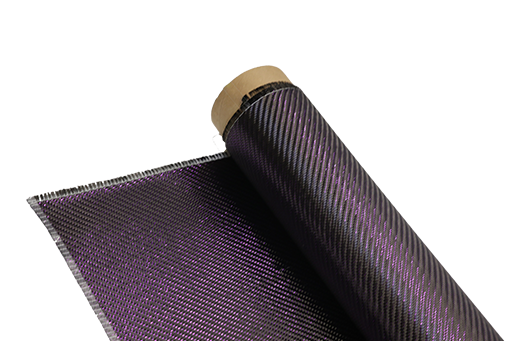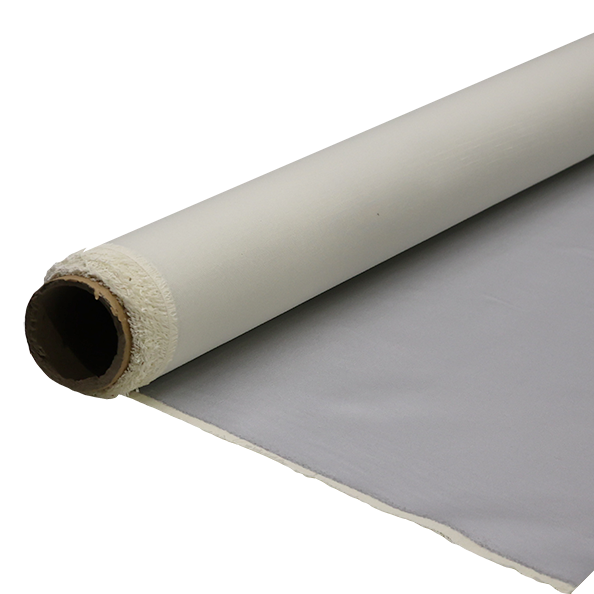Asia Pacific Emerges as Composite Materials Growth Hub
-
Table of Contents
“Asia Pacific: The Rising Hub for Composite Materials Innovation and Growth.”
The Asia Pacific region is rapidly establishing itself as a pivotal hub for the growth of composite materials, driven by a confluence of factors including robust industrial demand, technological advancements, and increasing investments in research and development. With a diverse range of applications spanning aerospace, automotive, construction, and consumer goods, the region is witnessing a surge in the adoption of lightweight, high-strength materials that enhance performance and sustainability. Key players in the market are leveraging the region’s manufacturing capabilities, skilled workforce, and favorable government policies to innovate and expand their product offerings. As environmental concerns and the push for energy efficiency continue to shape industry trends, the Asia Pacific is poised to lead the global composite materials market, fostering a new era of innovation and economic growth.
Asia Pacific’s Role in the Global Composite Materials Market
The Asia Pacific region has increasingly established itself as a pivotal player in the global composite materials market, driven by a confluence of factors that include rapid industrialization, technological advancements, and a growing demand for lightweight, high-performance materials across various sectors. As countries within this region continue to expand their manufacturing capabilities, the adoption of composite materials has surged, positioning Asia Pacific as a growth hub that is reshaping the landscape of the industry.
One of the primary catalysts for this growth is the booming aerospace and automotive sectors, which are increasingly prioritizing fuel efficiency and performance. In particular, the aerospace industry has recognized the advantages of composite materials, such as their high strength-to-weight ratio and resistance to corrosion. Consequently, manufacturers are investing heavily in research and development to innovate and enhance composite material applications. This trend is further supported by government initiatives aimed at promoting advanced manufacturing technologies, which have led to increased collaboration between research institutions and industry players.
Moreover, the automotive sector is undergoing a significant transformation, with a shift towards electric vehicles (EVs) and lightweighting strategies to improve energy efficiency. As automakers strive to reduce the weight of vehicles while maintaining safety and performance standards, composite materials have emerged as a viable solution. The integration of composites in vehicle design not only contributes to lower emissions but also enhances overall vehicle performance. This growing emphasis on sustainability and efficiency has prompted manufacturers in the Asia Pacific region to ramp up their production capabilities, thereby solidifying their position in the global market.
In addition to aerospace and automotive applications, the construction and infrastructure sectors are also witnessing a rising demand for composite materials. The durability and versatility of composites make them ideal for a variety of applications, including bridges, buildings, and other structural components. As urbanization accelerates in many Asia Pacific countries, the need for innovative construction materials that can withstand environmental challenges has become increasingly critical. Consequently, the region’s construction industry is embracing composite materials as a means to enhance structural integrity while reducing overall weight and costs.
Furthermore, the Asia Pacific region benefits from a robust supply chain that supports the composite materials industry. With a wealth of raw materials, including carbon fibers and resins, local manufacturers are well-positioned to meet the growing demand for composites. This self-sufficiency not only reduces dependency on imports but also fosters competitive pricing, making composite materials more accessible to a wider range of industries. As a result, companies in the region are better equipped to respond to market fluctuations and capitalize on emerging opportunities.
As the global composite materials market continues to evolve, the Asia Pacific region is poised to play an increasingly influential role. The combination of technological innovation, a strong manufacturing base, and a commitment to sustainability positions the region as a leader in the development and application of composite materials. Looking ahead, it is clear that Asia Pacific will not only contribute significantly to the growth of the global market but will also set the stage for future advancements in composite technology. In this dynamic landscape, the region’s ability to adapt and innovate will be crucial in maintaining its competitive edge and driving the industry forward.
Innovations Driving Composite Materials Growth in Asia Pacific

The Asia Pacific region is rapidly establishing itself as a pivotal hub for the growth of composite materials, driven by a confluence of innovative technologies, increasing demand across various industries, and supportive government policies. As industries such as aerospace, automotive, construction, and renewable energy continue to evolve, the need for advanced materials that offer superior performance characteristics has never been more pronounced. This demand is fostering a vibrant ecosystem of research and development, which is crucial for the advancement of composite materials.
One of the primary innovations propelling the growth of composite materials in the Asia Pacific region is the development of new resin systems. These advanced resins not only enhance the mechanical properties of composites but also improve their thermal stability and resistance to environmental degradation. For instance, the introduction of bio-based resins is gaining traction, as they offer a more sustainable alternative to traditional petroleum-based options. This shift towards eco-friendly materials aligns with global sustainability goals and is particularly appealing to industries looking to reduce their carbon footprint.
Moreover, advancements in manufacturing techniques are significantly contributing to the growth of composite materials. Techniques such as automated fiber placement and 3D printing are revolutionizing the way composites are produced. These methods not only increase efficiency and reduce waste but also allow for greater design flexibility. As a result, manufacturers can create complex geometries that were previously unattainable, thereby expanding the application possibilities for composite materials. This innovation is particularly evident in the aerospace sector, where weight reduction is critical for improving fuel efficiency and overall performance.
In addition to manufacturing advancements, the integration of digital technologies is playing a crucial role in the development of composite materials. The use of artificial intelligence and machine learning in material design and testing processes is enabling researchers to predict the performance of composites more accurately. This predictive capability accelerates the development cycle, allowing companies to bring new products to market faster. Furthermore, the implementation of digital twins in manufacturing processes enhances quality control and operational efficiency, ensuring that the final products meet stringent industry standards.
As the Asia Pacific region continues to invest in research and development, collaborations between academia and industry are becoming increasingly common. These partnerships are essential for fostering innovation, as they bring together diverse expertise and resources. Universities and research institutions are working closely with companies to develop cutting-edge composite materials that meet specific industry needs. This collaborative approach not only enhances the knowledge base but also facilitates the transfer of technology from research labs to commercial applications.
Government initiatives are also playing a significant role in promoting the growth of composite materials in the region. Many countries are implementing policies that support research funding, infrastructure development, and workforce training in advanced manufacturing technologies. These initiatives are designed to create a conducive environment for innovation and attract investment in the composite materials sector. As a result, the Asia Pacific region is becoming increasingly competitive on the global stage, positioning itself as a leader in composite materials development.
In conclusion, the Asia Pacific region is emerging as a growth hub for composite materials, driven by innovations in resin systems, manufacturing techniques, digital technologies, and collaborative efforts between academia and industry. With supportive government policies further enhancing this landscape, the region is well-positioned to meet the growing demand for advanced materials across various sectors. As these trends continue to unfold, the potential for composite materials in the Asia Pacific is vast, promising a future marked by enhanced performance, sustainability, and economic growth.
Key Industries Fueling Composite Materials Demand in Asia Pacific
The Asia Pacific region is rapidly establishing itself as a pivotal hub for the growth of composite materials, driven by a confluence of key industries that are increasingly recognizing the advantages of these advanced materials. As the demand for lightweight, durable, and high-performance materials escalates, several sectors are at the forefront of this transformation, propelling the composite materials market to new heights.
One of the most significant industries contributing to this surge is the aerospace sector. With the ongoing expansion of air travel and the need for more fuel-efficient aircraft, manufacturers are turning to composite materials to reduce weight and enhance performance. Composites, such as carbon fiber reinforced polymers, offer superior strength-to-weight ratios, which are essential for improving fuel efficiency and reducing emissions. As major aerospace companies in countries like Japan, China, and India ramp up production, the demand for advanced composite materials is expected to grow exponentially, further solidifying the region’s position in the global aerospace supply chain.
In addition to aerospace, the automotive industry is also a major driver of composite materials demand in the Asia Pacific. As automakers strive to meet stringent environmental regulations and consumer preferences for fuel-efficient vehicles, the integration of composites into vehicle design has become increasingly prevalent. Lightweight composites not only enhance fuel efficiency but also improve safety and performance. The rise of electric vehicles (EVs) is particularly noteworthy, as manufacturers seek to offset the weight of batteries with lighter materials. Consequently, the automotive sector’s shift towards sustainability and innovation is significantly boosting the composite materials market.
Moreover, the construction industry is embracing composite materials for their durability and versatility. As urbanization accelerates across Asia Pacific, the need for sustainable and resilient building materials has never been more critical. Composites are being utilized in a variety of applications, from structural components to aesthetic finishes, owing to their resistance to corrosion and environmental degradation. This trend is particularly evident in countries like Singapore and Australia, where innovative construction practices are being adopted to create smart, sustainable cities. The integration of composite materials in construction not only enhances the longevity of structures but also contributes to energy efficiency, aligning with global sustainability goals.
Furthermore, the wind energy sector is experiencing a significant uptick in the use of composite materials, particularly in the manufacturing of turbine blades. As nations in the Asia Pacific region invest heavily in renewable energy sources, the demand for lightweight and strong materials that can withstand harsh environmental conditions is paramount. Composites, with their excellent fatigue resistance and low weight, are ideal for this application, enabling the production of larger and more efficient wind turbines. This shift towards renewable energy is not only fostering growth in the composite materials market but also supporting broader environmental initiatives.
In conclusion, the Asia Pacific region is witnessing a remarkable expansion in the composite materials market, fueled by the dynamic interplay of key industries such as aerospace, automotive, construction, and renewable energy. As these sectors continue to evolve and innovate, the demand for advanced composite materials is set to rise, positioning Asia Pacific as a central player in the global materials landscape. The ongoing advancements in technology and manufacturing processes will further enhance the capabilities of composite materials, ensuring that they remain at the forefront of industrial development in the region.
Q&A
1. **Question:** What factors are contributing to the growth of composite materials in the Asia Pacific region?
**Answer:** Key factors include increasing demand from industries such as aerospace, automotive, and construction, advancements in manufacturing technologies, and supportive government policies promoting sustainable materials.
2. **Question:** Which countries in the Asia Pacific are leading in composite materials production?
**Answer:** Countries such as China, Japan, and India are leading in composite materials production, driven by their strong manufacturing bases and investments in research and development.
3. **Question:** What are the main applications of composite materials in the Asia Pacific market?
**Answer:** Main applications include aerospace components, automotive parts, wind turbine blades, and construction materials, where lightweight and high-strength properties are essential.The Asia Pacific region is rapidly establishing itself as a central hub for the growth of composite materials, driven by increasing demand across various industries such as aerospace, automotive, construction, and renewable energy. Factors contributing to this trend include advancements in manufacturing technologies, a skilled workforce, and supportive government policies promoting innovation and sustainability. As a result, the region is poised to lead in the development and application of composite materials, fostering economic growth and enhancing global competitiveness.











